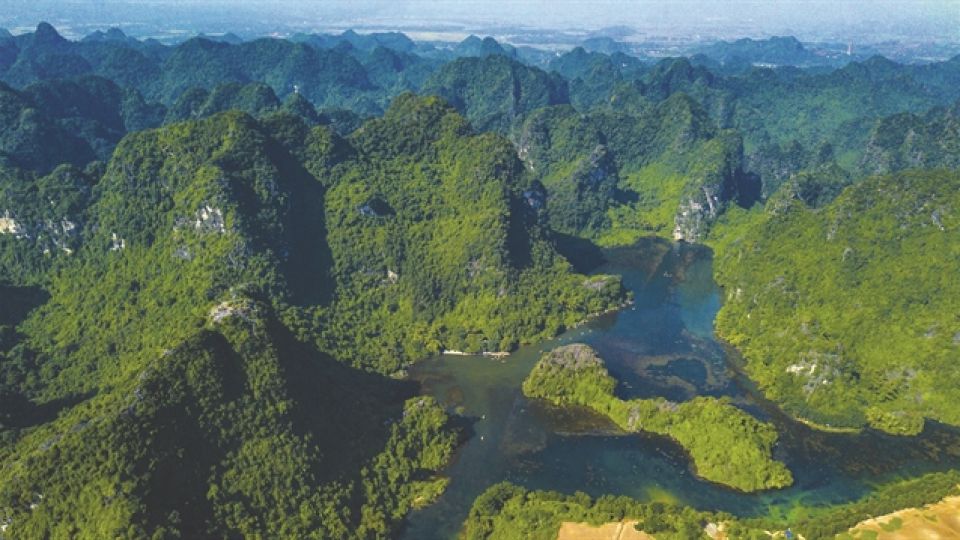October 17, 2022
HANOI – This month celebrates the 35th anniversary of Việt Nam’s official accession to the Convention on the Protection of World Cultural and Natural Heritage.
Since the country ratified the Convention, eight of its cultural, natural, and mixed heritages have been added to the World Heritage list: Hạ Long Bay (Quảng Ninh), Phong Nha Kẻ Bàng National Park (Quảng Bình), Complex of Huế Monuments (Thừa Thiên Huế), Hội An Ancient Town (Quảng Nam), Mỹ Sơn Sanctuary (Quảng Nam), Imperial Citadel of Thăng Long (Hà Nội), Hồ Dynasty citadel (Thanh Hóa), and the Tràng An Scenic Landscape Complex (Ninh Bình).
Việt Nam also holds seven ‘documentary heritages’ at the Asia-Pacific and global levels, according to the Memory of the World programme of UNESCO. The country is also home to nine global biosphere reserves.
The protection and promotion of the sites have greatly contributed to Việt Nam’s socio-economic development, particularly in tourism, serving practical and long-term benefits.
According to the Department of Cultural Heritage under the Ministry of Culture, Sports and Tourism, there were only tens of thousands of travellers when the Huế monuments were freshly registered as a global cultural and natural heritage many years ago.
To date, it has drawn millions of visitors.

Tourists visit Huế Imperial Citadel. VNA/VNS Photo
The figures also reveal that while the Tràng An Scenic Landscape Complex had about 1 million visitors when it applied to be designated as a World Heritage site in 2012, it had garnered more than 6.3 million visits by 2019, following 5 years of being recognised by UNESCO.
In the province of Quảng Nam, the preservation of Hội An ancient town, in association with the expansion of tourism, services, and commerce, has aided the restructuring of the local economy.
The number of visitors rose from around 879,000 in 2006 to over 2.5 million in 2019.
Since Hội An was designated a World Heritage site more than two decades ago, revenue from service tourism based on the exploitation of historical values has expanded substantially and currently accounts for more than 70 per cent of the ancient town’s GDP.

A view of Hội An ancient town, from above. Since its recognition as a World Cultural Heritage site in 1999, this historic landmark has drawn visitors worldwide. VNA/VNS Photo
These funds have contributed significantly to enhancing infrastructure, education, health, community safety, and preserving Hội An.
Before the pandemic, the number of tourists visiting Quảng Ninh’s Hạ Long Bay in 2019 reached 4.4 million, with roughly 2.9 million international visitors.

Hạ Long Bay offers unique natural scenery and exceptional values in the world. VNA/VNS Photo Minh Đức

Visitors snap photos in Hạ Long Bay. Millions of people from all over the world come to Hạ Long Bay every year to see its breathtaking natural beauty. VNA/VNS Photo Thanh Vân
It didn’t take long for tourism in Quảng Ninh to bounce back once the province reopened after the pandemic.
During the first half of 2022, the province had 5 million visitors, up over 100 per cent. A total of VNĐ10,000 billion was earned from tourists in the province, an increase of 122 per cent.
According to Minister of Culture, Sports and Tourism Nguyễn Văn Hùng, the World Heritage sites in Việt Nam effectively contribute to sustainable economic and social development by creating local jobs, fostering community, boosting tourism, trade and investment, and promoting Việt Nam’s international reputation, culture, history, and traditions.
“Within the context of the UNESCO mechanism and the Convention on the Protection of World Cultural and Natural Heritage in particular, Việt Nam always performs well its membership duties,” he said.
Active member
Throughout its 35-year engagement in the Convention, Việt Nam has been an active and responsible member in implementing its duties to preserve and promote global heritage.
The country joined the Convention in 1987, and since then, it has worked closely with UNESCO on several programmes designed to aid local communities in preserving and developing their unique cultural practices.
Regarding international cooperation in cultural heritage, Việt Nam has ratified the 1972 Convention, the UNESCO Convention on the Protection of Intangible Cultural Heritage (2003), and the UNESCO Convention on the Protection and Promotion of the Diversity of Cultural Expression (2005).
Shortly, the country is expected to join the UNESCO Convention on the Protection of Underwater Cultural Heritage (2001).
Việt Nam also made significant progress in raising awareness of the importance of world cultural and natural assets. This is mirrored in the legal framework for cultural heritage, which is progressively being constructed in the spirit of the Convention.
World heritage management agencies are being consolidated from the national to the local levels. World heritage preservation resources are prioritised, deployed to the greatest extent possible, and always enlisted worldwide help to conserve world heritage.
In July, during the 9th General Assembly of the member states of the 2003 Convention, Việt Nam was elected to the UNESCO Committee for the Protection of Intangible Cultural Heritage for 2022-2026 with the most votes.
This demonstrates the growing impact Việt Nam is receiving for its efforts to protect and promote cultural artefacts at home and abroad. It is also a great chance for Việt Nam to promote Vietnamese cultural values to the world community and keep positively contributing to UNESCO’s key cultural programmes and orientations.
According to Ambassador Lê Thị Hồng Vân, head of the Permanent Delegation of Việt Nam to UNESCO, Việt Nam is assuming this role at UNESCO’s major cultural, regulatory body for the second time, following a previous term from 2006-2010.
Vân noted that Việt Nam would be in a prime position to make positive contributions to the development and execution of the aims and priorities of the 2003 Convention and to elevate the status of intangible cultural heritage during its tenure on the Intergovernmental Committee from 2022-2026.
She said this was a vital resource for variety, innovation, intercultural discussion, and social cohesion and a motivating factor for long-term progress.


